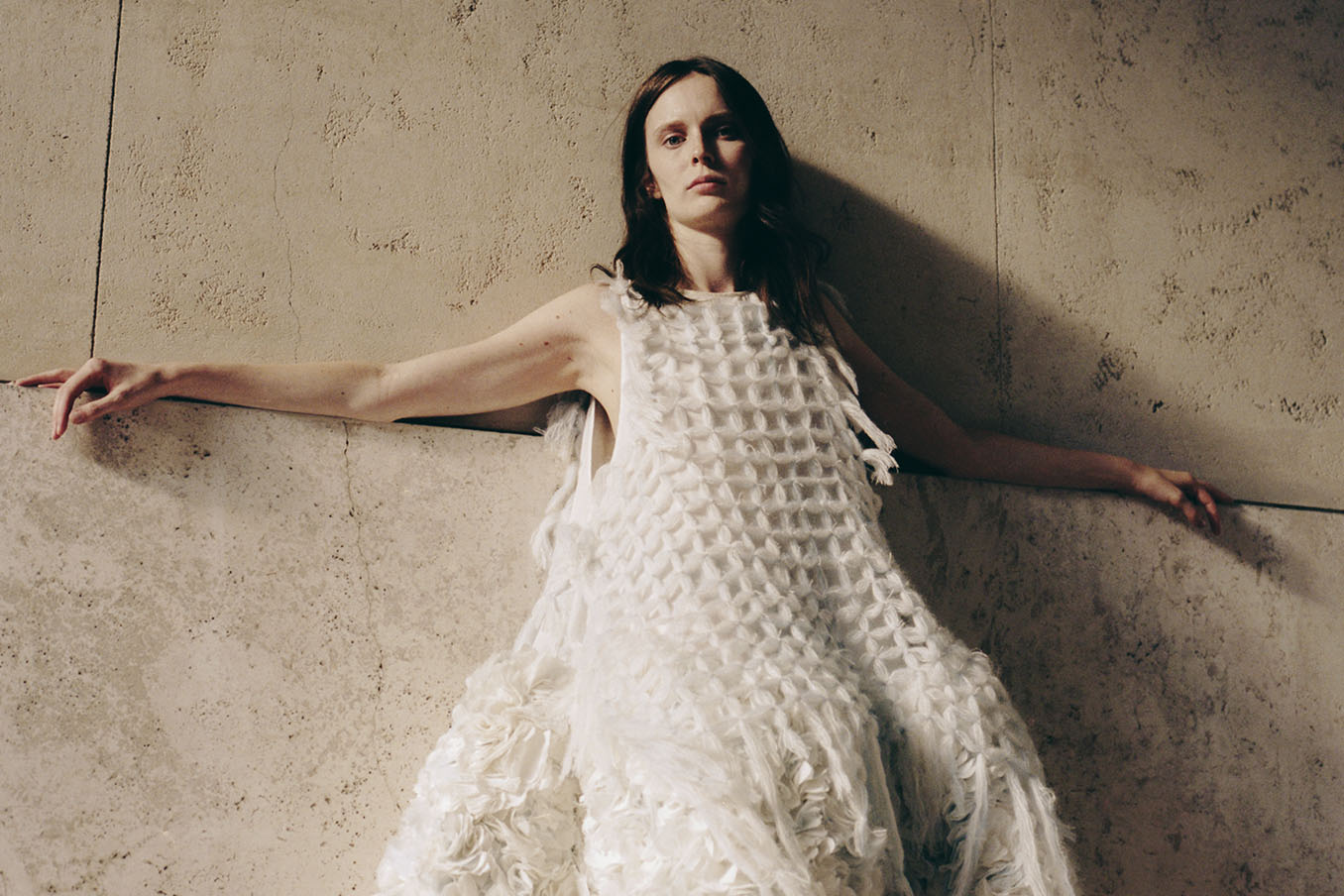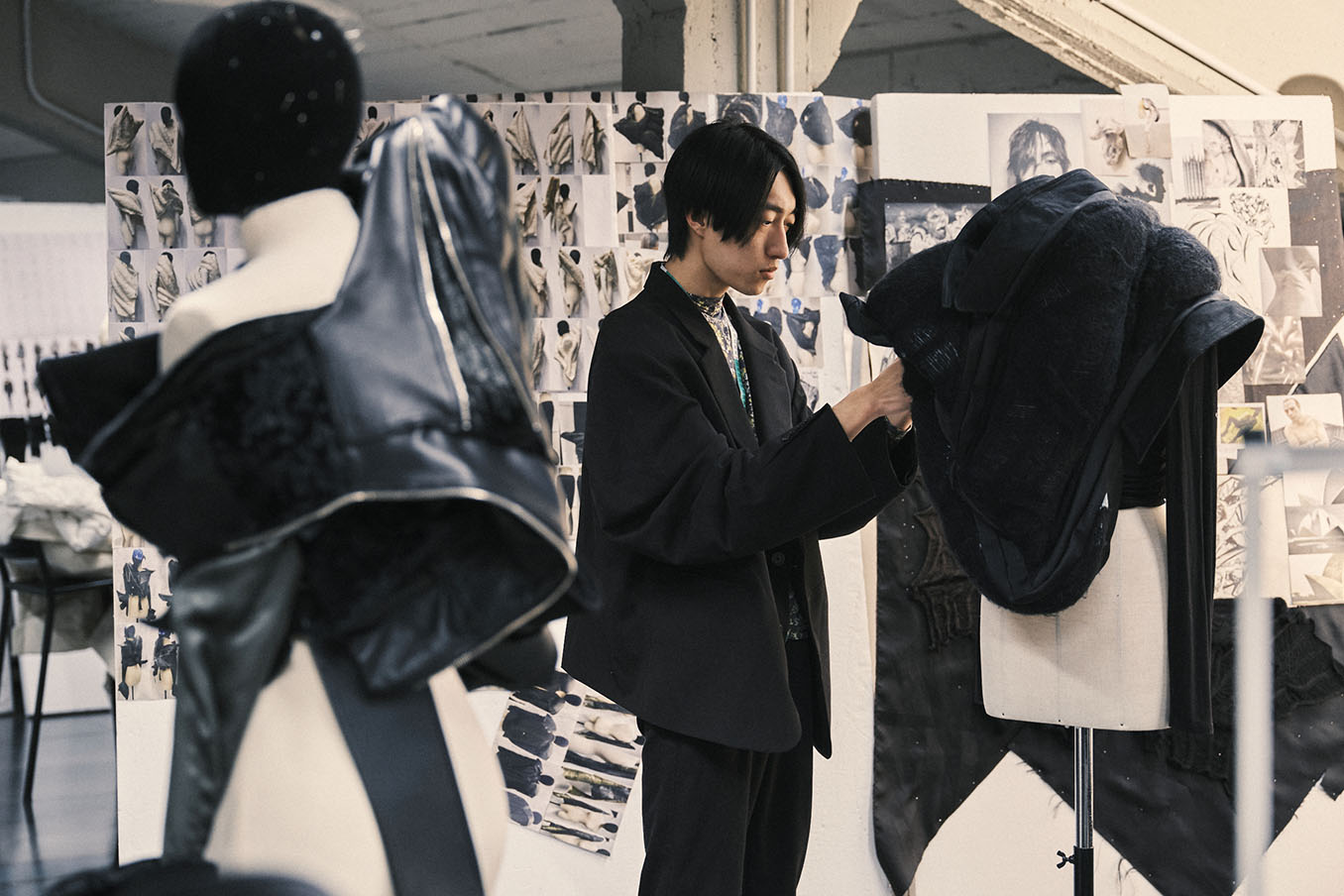Unusually in the fashion education panorama, through Director Massimiliano Giornetti’s professional sensitivity, students have the opportunity to explore and cement their skills in the industry sphere, working with companies to create their projects and bring their ideas to life, demonstrating the uniqueness of Polimoda as an industry-connected fashion school.
Pitti Filati, the under-the-radar cousin of menswear giant Pitti Uomo, is a whole world; an important place where the threads of the industry are made, a factory for connections and networking, and an opportunity for students to learn what it takes to make and produce knitted garments.
Students from Undergraduate in Fashion Design, Undergraduate in Fashion Art Direction, Master in Fashion Design and Master in Textile Design courses collaborated with two prolific knitwear companies, Linea Più and Shima Seiki, where they experienced designing and making garments or textiles with industry applications. With quality and execution at the top of the priority list, the students follow a real production process, where the designer is involved with aspects from design to material selection, production, and execution. What’s more, Linea Più’s stand itself was shaped by students of the Fashion Art Direction course who worked on its social media, design, and installation.
Undergraduate in Fashion Art Direction student Mobina Mirzaei explains the concept behind the stand, “We wanted to recreate the feeling of walking through a forest. This was expressed through immersive soundscapes, carefully placed mannequins, and layered textiles that visitors had to move through in order to fully experience the pieces—just like navigating through nature.”
Together with Ana Sofia Ramirez Preciado and Apolline Deleu they underlined the purpose of the stand to create an atmosphere that engaged the senses and invited people to explore, not just observe. But what does knitwear and yarn production mean for a fashion Art Director? “An art director is, in many ways, a storyteller. Like any story, you need essential building blocks to create something greater. Yarn, in this sense, is a perfect metaphor,” Mobina states. Just as individual yarns come together to form a fabric, the fundamental elements in art direction—concepts, visuals, emotions—intertwine to build a larger, impactful narrative.
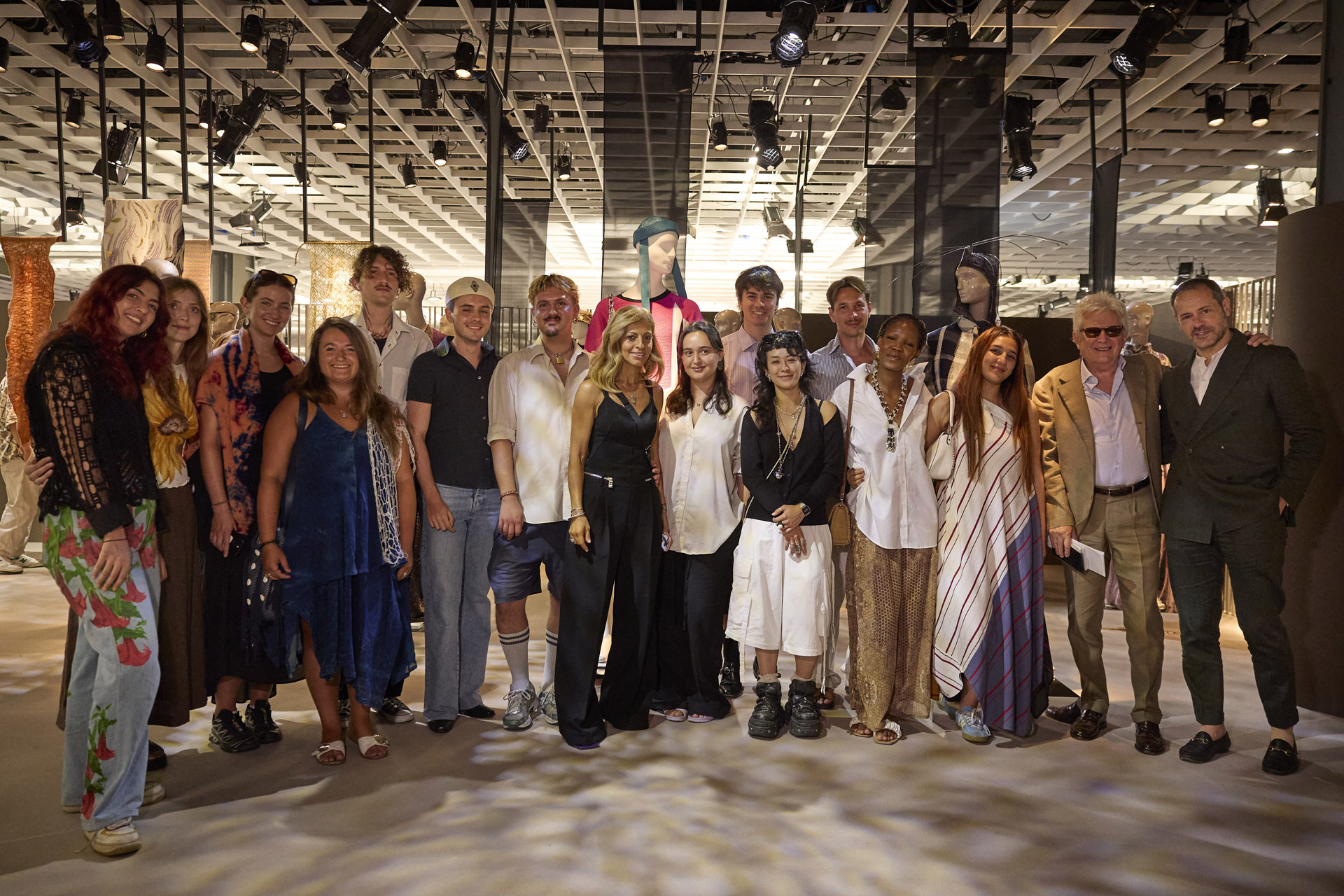
The stand showcased garments made by Polimoda Fashion Design students in collaboration with Linea Più: Andrea Di Giulio, Master in Fashion Design graduate, designed a knitwear piece that reflected the main theme of his thesis collection Poetica del Due, which reflects the deep and complex relationship between himself and his twin brother, tackling themes like duality, identity, and emotional tension. He worked closely with knitwear design teacher Naira Khachatryan, who was his mentor throughout the process, supporting him in finding the right yarn and developing the manipulations that best expressed his story and creative vision.
The collaboration with Linea Più involved visiting their Florence headquarters, exploring their wide range of samples, yarns, and colors. After presenting the design ideas, he began collaborating with a knitwear factory to develop the piece. Andrea was particularly enthused by Linea Più’s openness to emerging designers, and the opportunity to follow the development of a knitwear piece from design to production through to the exhibition.
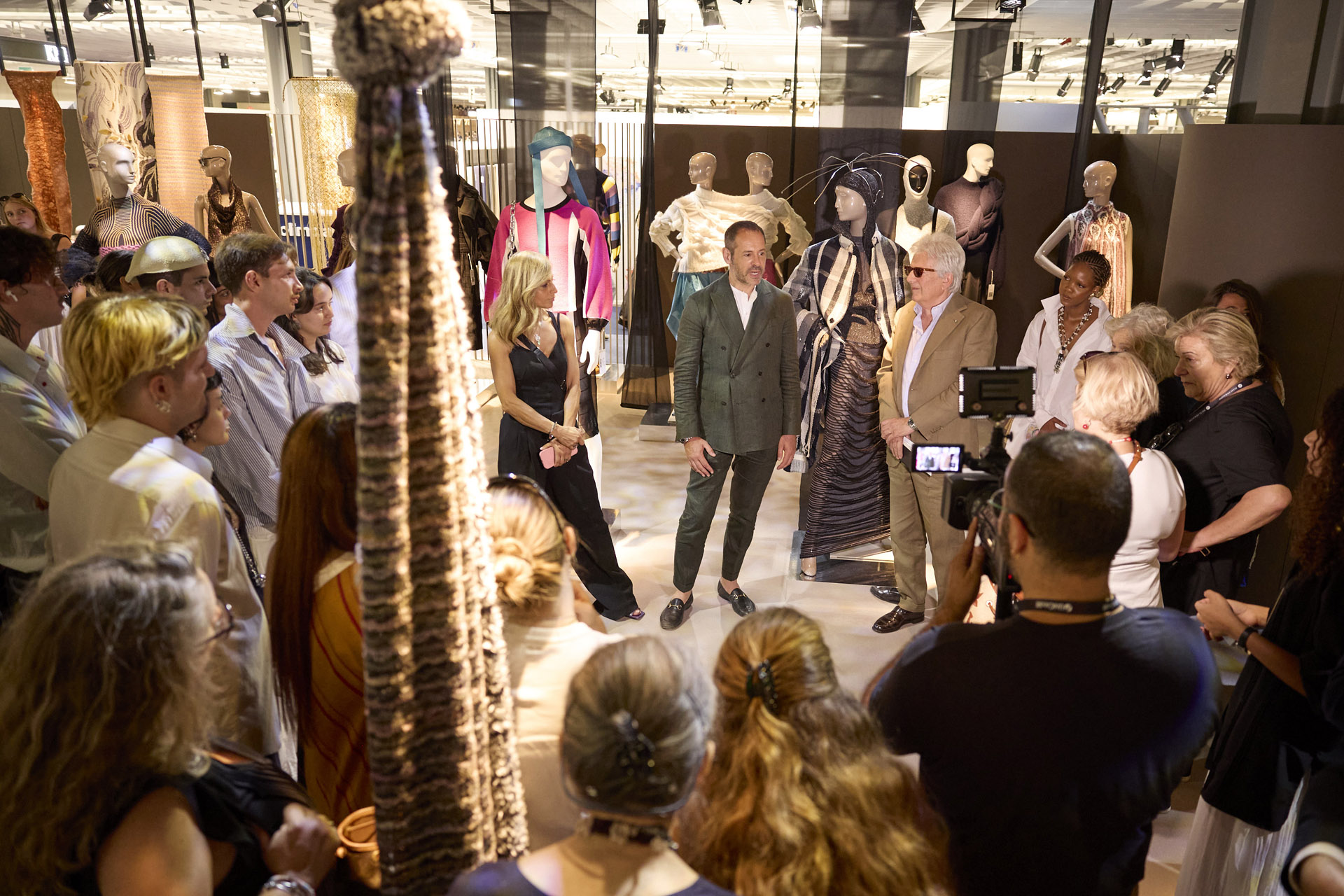
Nansen Capici, recent graduate from the Undergraduate in Fashion Design course, explored different types of yarn to create his piece. Naïf and Giselle are two delicate, soft yarns that visually translate the softness and stillness of snow. These were contrasted with Image, a drier and shinier yarn, chosen for its cold, reflective quality. The interplay of these yarns allowed Nansen to express the duality of warmth and protection versus brilliance and exposure at the heart of his concept, Silenzio Bianco, a collection that is inspired by Arctic landscapes and the solitary experience of exploration. For this garment he drew inspiration from the aerial view of two different arctic landscapes. The balaclava and tight-fitting top recall survival gear, while the wide jacquard trousers, resembling scratched ice, add a layer of visual depth and metaphor.
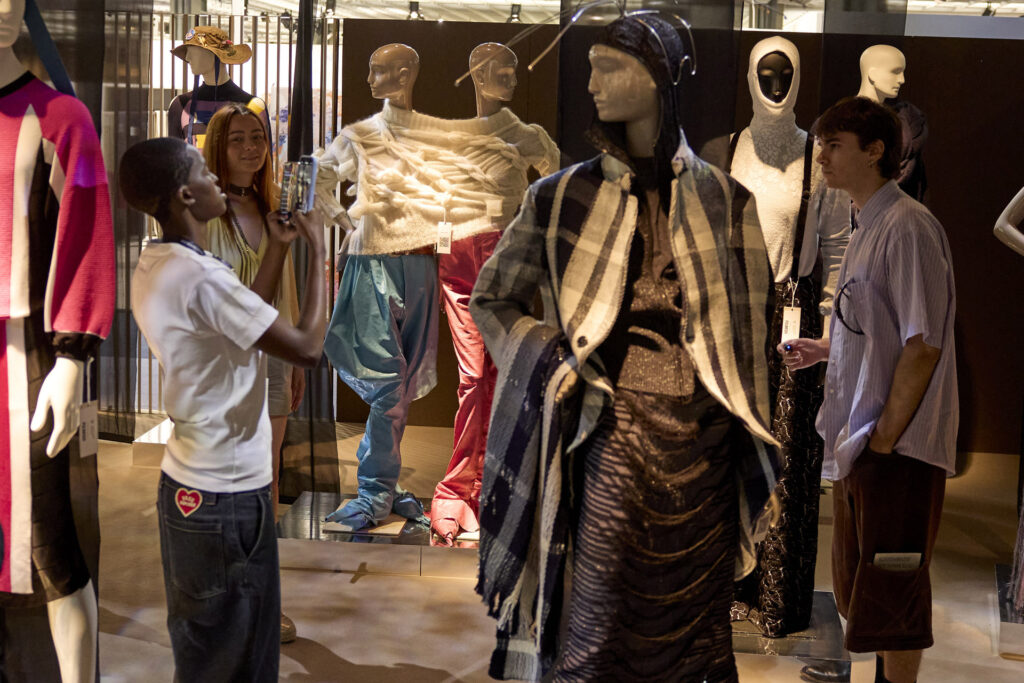
Master in Textile Design student Aislinn Nix contributed to one of the main installations of the stand by creating a knit swatch. The swatch development began with knitwear teacher Naira, choosing the best sketch for a swatch development and then choosing yarns before making some smaller knit samples. Aislinn wanted to reimagine a familiar plaid pattern from her native US midwest, using Linea Più’s Autumn/Winter 25/26 Image yarn, 80% Viscose and 20% Metallic because of its fine and thin texture and shimmer effect. “With my design, I developed a contemporary interpretation that still honors its roots. The shimmer of the metallic yarn added a refined, unexpected element that elevated the traditional plaid into a textile that feels both nostalgic and fresh. This project was an opportunity to bridge my personal history with my current design practice, creating something that feels both deeply personal and visually fresh.”
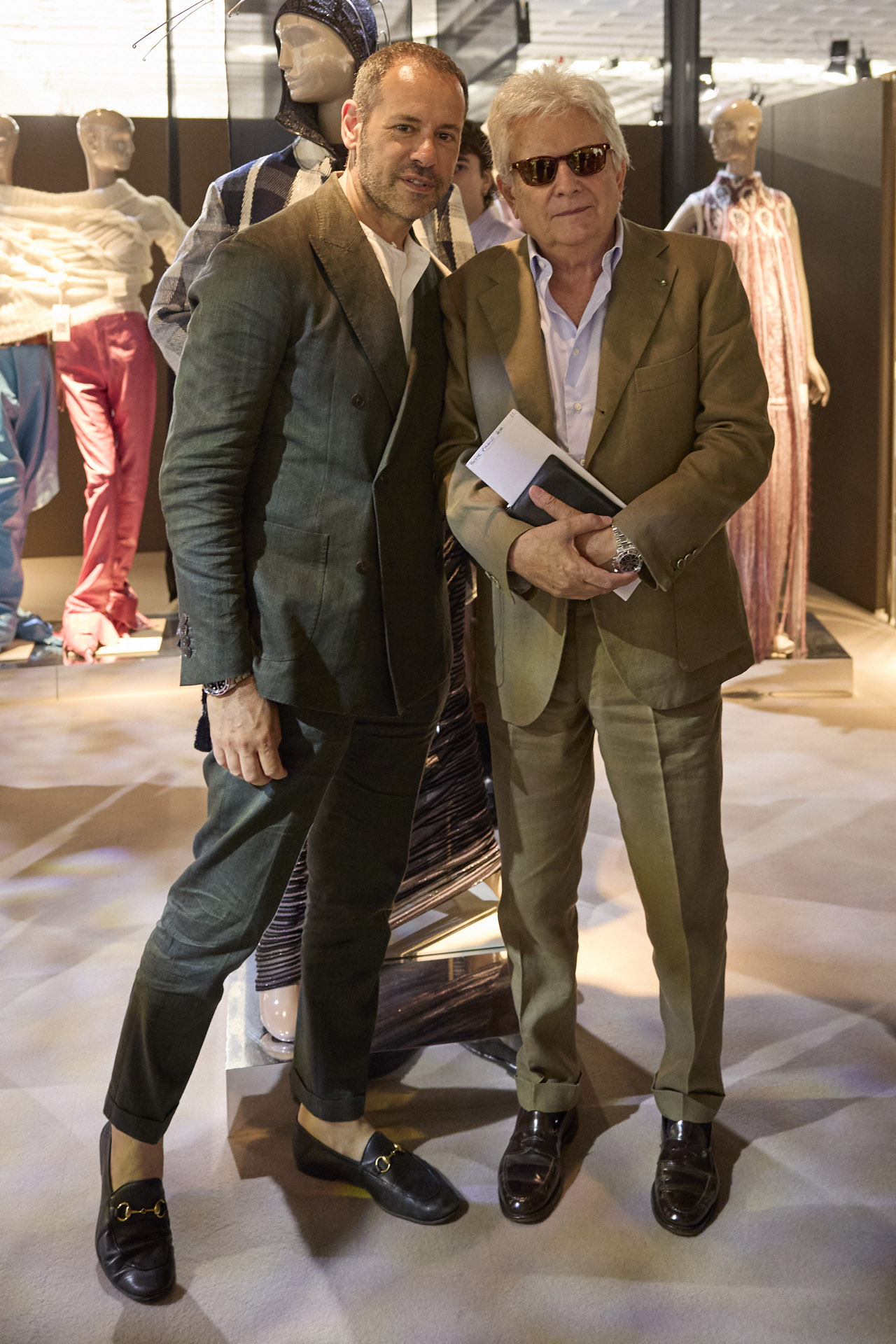
Ultimately, collaborating with Linea Più has allowed Aislinn to see knitwear as an incredibly versatile and expressive medium: “It allows for tactile storytelling, where texture, material, and structure can be manipulated to bring personal or cultural references to life. For me, knitwear is a tool to transform something familiar into something unexpected.”
Similarly, Master in Textile Design student Ting Xie found that material is crucial to storytelling, “I learned how crucial yarn selection is—not only technically but emotionally (…) materials are never neutral—they carry stories, emotions, and potential.”
Shima Seiki, a top manufacturer of computerized flat knitting machines and design systems, was a key experiential partnership for the students, providing a real industry immersion into knitwear machinery and systems, and the results they can give.
Undergraduate in Fashion Design graduate Farnia Salim worked with Polimoda knitwear teacher Naira and technicians from the Shima Seiki lab to create her garment, “they explained the software, and how our design translated into digital files, tested swatches, adjusted the programming, and finally knitted the piece with technical support.” She used a clean, cotton yarn to contrast with the softness of her concept as well as silk yarns. Her garment comes from her In Between Homes graduate collection; it explores identity, restriction, and duality, blending structured elements with soft, expressive details to show the contrast of two worlds.
Farnia outlined how working with Shima Seiki involved focussing on precision and innovation, with a strong emphasis on technical refinement. “To me, knitwear is about versatility and possibility. It allows for freedom in shape, texture, and technique, blurring the line between structure and softness. It’s a medium where emotion, comfort, and innovation can coexist.”
Nansen Capici also created a garment with Shima Seiki, claiming that the company “approaches yarns almost like a part of the design language itself. It’s not just about using a yarn to make a garment, but about understanding how that yarn can push the limits of form, structure, and texture.” In the process of making his piece of outerwear, the graphic pattern of which is inspired by camouflage and ice formations, reinterpreted through knit, whereas the shape and surface treatments were designed to combine technical construction with strong visual impact, Nansen found the company to be open to experimentation, combining advanced technology with creative input. “I felt like there was a real dialogue between the material and the machine and that mindset shaped the way I approached my own project.”
In the fashion education panorama, this type of student company collaboration is unusual and unique in its effectiveness and scope. It manages to affect students across a range of textile, fashion design, and fashion art direction disciplines, demonstrating the impact of the school’s director, Massimiliano Giornetti, who after years at the helm of Ferragamo and former student himself, doesn’t shy away from placing his students in real industry situations. These contexts provide an opportunity for skill expansion, and the creation of networks and professional relationships. They last beyond the students’ diploma and are a necessary and vital life force for the survival of the industry.
Criticism of fashion education often focuses on the question, “are we preparing our designers with the tools to be truly independent?” Giornetti, with his philosophy and practise of throwing students into industry working relationships, equips them with a dose of realism. To change the world, you have to know how it works: by working with suppliers, machine makers, and yarn purveyors, and having the right team and tools, anything is possible.
CREDITS
Cover image:
- Garment by Farnia Salim, produced with Shima Seiki. Photo: Salvatore Dragone / GoRunway
